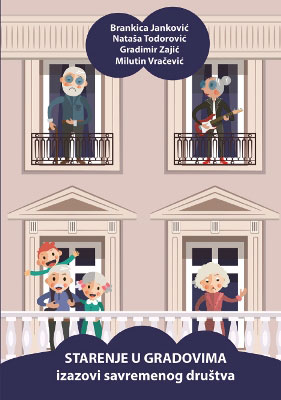Ageing in Cities - Challenges of the Modern Society

"Ageing in Cities - Challenges of the Modern Society" is a report on the results of a research conducted by the Red Cross of Serbia in partnership with the Commissioner for Protection of Equality with support provided by United Nations Population Fund (UNFPA), Belgrade Office.
Two main trends defining the global society today are demographic ageing and urbanisation – migration of the population from rural areas to cities. It is estimated that both trends will continue into the future. At this moment, there are 901 million people over the age of 60 on the planet and it is estimated that by 2030 this figure will rise to 1.4 billion and to two billion by 2050 – 22% of the total world’s population.
In Serbia, according to the data of the Statistical Office of the Republic of Serbia, in 2018 the share of the 65+ population in the overall population was 19% with demographic estimates being that by 2030 this will increase to 21% with 5% of the total population being over the age of 80.
Furthermore, more than a half of global population (54%) currently lives in cities and it is estimated that by 2050, this will increase to two thirds of the population (66%). In Europe, 68% of the population lives in cities and in Serbia 56%. Looking only at older people, 58% of all older people – more than 500 million – live in cities.
The objectives of the research were: assess the living circumstances of older women and men from urban areas; assess accessibility of services of healthcare and social welfare as well as other areas of public services, such as transport; assess the safety of older people in urban areas in Serbia; assess the needs of older people in urban areas in Serbia; provide optimal recommendations to improve the quality of life of older women and men as well as promote examples of good practice.
The research was implemented in September and October 2017 at the territory of the Republic of Serbia, using a random, representative sample of respondents over the age of 65 living in urban areas. Additionally, 5 focus groups with 74 older persons were organised. The interview questionnaire had 72 questions in 8 thematic areas.
The research shows that despite relatively safer and more comfortable living in urban compared to rural areas, there are many challenges to be addressed and many barriers to be removed: infrastructure and architectural solutions, prevention of chronic non-communicable diseases and promotion of healthy life styles, better design of social welfare services and provision of support to informal caregivers, inclusion of older people in planning and preparations for crises and emergencies, combating ageism and creating opportunities for being active in the community through work, education, art and recreation, that will lead to better social inclusion, individual wellbeing and lasting economic contributions during one’s life course.
The authors of the publication are: Brankica Janković, Nataša Todorović, Gradimir Zajić and Milutin Vračević.
